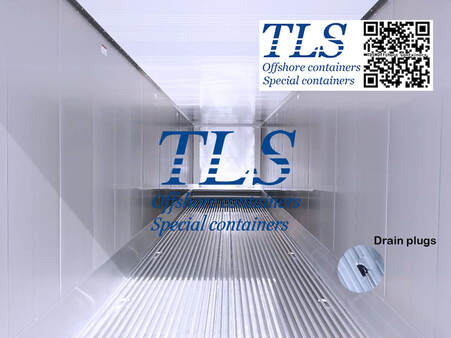|
A refrigerated |reefer Container is a closed container with refrigeration equipment and low thermal conductivity materials on the inner wall which is used to transport or preserve fresh fish, fresh meat, frozen food, fruits, vegetables, films, medicines and other required goods. Refrigerated containers are also divided into refrigerated containers and insulated containers.
Livestock and poultry meat Include cattle, sheep, pigs, chickens, ducks, geese, etc. Usually, meat reaches a dormant state below -18°C, and if it is below -23°C, the refrigeration period can be doubled. Frozen fish and aquatic products The storage time of fish and seafood is closely related to temperature. Under normal conditions, the freezing period increases by a factor of 3 for every 10°C decrease in temperature. Low-fat fish has a shorter freezing period, while muscle red fish has a shorter freezing period. Chocolate products Shippers often ask to check that the humidity is set to 65%. Depending on the variety of chocolate, the temperature is usually between 8°C and 18°C. Temperature control products Goods that require temperature stability during transportation, such as films, medicines, food, etc. To avoid clumping and deterioration, the temperature was set between -2°C and 30°C. Dangerous goods and harmful goods Reefer containers maintain high standards and maintain quality for the transport of dangerous or sensitive cargo. This type of refrigerated container is distinguished by a particular color and logo. Mixed refrigerated goods Generally, it should be avoided to mix all kinds of fresh fruits and vegetables in the reefer container. Due to the volume, variety, cost and other reasons, pay attention to the temperature during transportation, Fruits and vegetables are mixed in containers. The closer the refrigeration temperature is, the better. Key words: #reefer #refrigerated #TLS offshore containers #Portable reefer container #Insulation containers #container cold storage Comments are closed.
|
Archives
July 2024
Categories
All
|
- Home
-
Containerised solutions
- Intelligent pressurised container | MUD logging cabin
- Battery energy storage system (BESS) container
- Flexible grid tied battery storage system
- Laboratory container | workshop container | Equipment containers
- Temporary refuge shelter | Toxic gas refuge | Safe haven
- Offshore accommodation cabin | office container
- Reefer container | Refrigerated container
- Intelligent waste water treatment container
- Fresh water generator container
- Cargo Containers
- Product photos & videos
- News & Blogs
- Contact us
|
Featured products
Intelligent pressurised container Temporary refuge (TR) shelter, toxic gas refuge (TGR) Battery energy storage system (BESS) container Containerised waste water treatment plant Fresh water generator container Reefer container Laboratory container, Workshop container Accommodation container Offshore closed container |
All Rights Reserved 2020 © TLS Offshore Containers / TLS Energy
|

